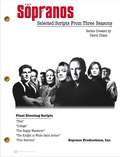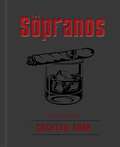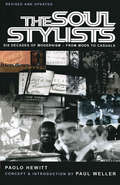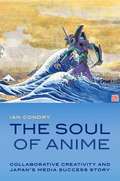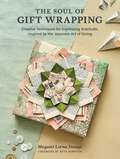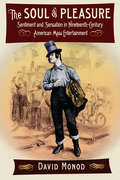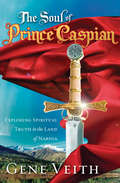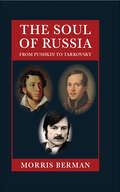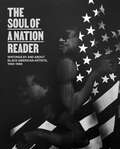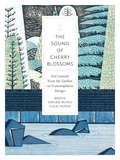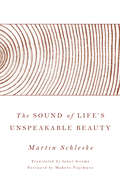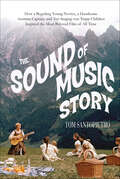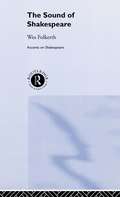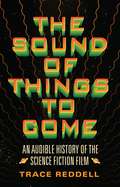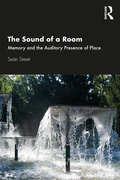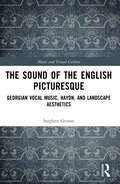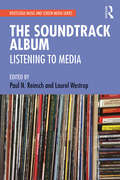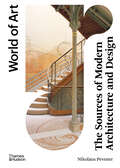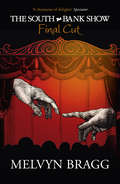- Table View
- List View
The Sopranos: Selected Scripts from Three Seasons
by David ChaseThis must-have book for every fan of HBO's hit show "The Sopranos" packs five scripts from the best episodes, handpicked by series creator David Chase. Completed scripts are included for the episodes: Pilot, College, The Happy Wanderer, The Knight in White Satin Armor, and Pine Barrens. 8-page photo insert.
The Sopranos: The Official Cocktail Book
by Sarah Gualtieri Emma Carlson BerneRaise a toast to one of television&’s greatest series with distinctive cocktails inspired by the iconic moments and legendary characters of The Sopranos.Now it&’s easier than ever to craft killer cocktails sure to make the family proud. Featuring 60 classic recipes, The Sopranos: The Official Cocktail Book will have your whole crew sipping in style. This officially licensed collection includes drinks inspired by everyone from Tony and Junior Soprano to Chris Moltisanti, Paulie, Carmela, and more–plus step-by-step instructions, bartender tips, and beautiful full-color photography–making it an essential addition to every wise guy&’s bar cart or bookshelf. 60 RECIPES: Containing a varied roster of drinks from all corners of the series, The Sopranos: The Official Cocktail Book is a must-have, comprehensive guide for... this thing of ours. FOR ALL RANKS: Detailed, step-by-step instructions and helpful mixology tips ensure success. STUNNING PHOTOS: Beautiful, full-color photography helps you present picture-perfect (FBI-proof) cocktails. DRINK LIKE A BOSS: Featuring lively concoctions inspired by the memorable locations, legends, and allies of the New Jersey mob, this book captures the world and feel of the award-winning series inside every glass.
The Sorcerer's Apprentice: A Memoir of Picasso, Provence, and Douglas Cooper
by John RichardsonJohn Richardson's riveting memoir about growing up in England and, at twenty-five, beginning his twelve-year adventure with the controversial art collector Douglas Cooper. With a new introduction by Jed Perl, here is John Richardson's richly entertaining memoir of his life with the brilliant but difficult British art expert Douglas Cooper--a fiendish, colorful, Evelyn Waugh-like figure who single-handedly assembled the world's most important private collection of Cubist paintings. John Richardson tells the story of their ill-fated but comical association, which began in London in 1949 when Richardson was twenty-five and moved onto the Château de Castille, the famous colonnaded folly in Provence that they restored and filled with masterpieces by Picasso, Braque, Léger, and Juan Gris. Richardson unfurls a fascinating adventure through twelve years, encompassing famous artists and writers, collectors and other celebrities--Francis Bacon, Jean Cocteau, Luis Miguel Dominguín, Dora Maar, Peggy Guggenheim, and Henri Matisse, to name only a few. And central to the book is Richardson's close friendship with Picasso, which coincided with the emergence of the artist's new mistress, Jacqueline Roque, and gave Richardson an inside view of the repercussions she would have on Picasso's life and work.With an eye for detail, an ear for scandal, and a sparkling narrative style, Richardson has written a unique, fast-paced saga of modernism behind the scenes.
The Soul Stylists: Six Decades of Modernism - From Mods to Casuals
by Paolo HewittThe Soul Stylists is about six decades of Modernism and a highly influential world of clothes and music, but one deliberately hidden away for years from the mainstream media. This book explores the enduring relationship that exists between American black music and British working-class style, tracing a Mod tradition that began in Soho just after the Second World War and continues to this day. From Mod to Casual, from Skinhead to Northern Souler, the soul stylists are an amazing family joined together by a tradition of secrecy, exclusivity and absolute indifference towards the outside world. They pass unnoticed because soul stylists always shun the spotlight. To them, attention to detail is far more important than attention seeking. And here in this book, for the very first time, are some of their stories.
The Soul Support Book, 2nd Edition: Get Unstuck, Expand Your Awareness, Lift Your Spirits, and Be Here Now
by Deb KoffmanDeb Koffman's witty, brightly colored cartoons offer wise insights and entertaining perspectives on universal themes, including: getting unstuck, living mindfully, unleashing creativity, and seeking joy.
The Soul of Anime: Collaborative Creativity and Japan's Media Success Story
by Ian CondryIn The Soul of Anime, Ian Condry explores the emergence of anime, Japanese animated film and television, as a global cultural phenomenon. Drawing on ethnographic research, including interviews with artists at some of Tokyo's leading animation studios--such as Madhouse, Gonzo, Aniplex, and Studio Ghibli--Condry discusses how anime's fictional characters and worlds become platforms for collaborative creativity. He argues that the global success of Japanese animation has grown out of a collective social energy that operates across industries--including those that produce film, television, manga (comic books), and toys and other licensed merchandise--and connects fans to the creators of anime. For Condry, this collective social energy is the soul of anime.
The Soul of Gift Wrapping: Creative Techniques for Expressing Gratitude, Inspired by the Japanese Art of Giving
by Megumi Lorna InouyeWith a combination of inventive wrapping designs, inspiring personal essays, and step-by-step techniques, Megumi Inouye invites readers to transform the act of wrapping into a gratitude practice. Drawing on the gift-giving traditions of her Japanese heritage, Inouye explores how the act of giving a thoughtfully wrapped gift can be a creative, caring act for both the giver and the receiver. Using recycled and repurposed materials, Inouye&’s approach inspires readers to think intentionally about the presentation of every gift, whether it's a tip for an unseen hotel housekeeper, a simple gift of fresh fruit for a neighbor, or a special birthday gift for a beloved family member. Detailed step-by-step photos teach Inouye's artful approach to every aspect of wrapping—including tape-free folding, paper and fabric bows, clever message tags, and one-of-a-kind approaches for odd-shaped items—and guide readers in creating their own unique gift presentations.
The Soul of Pleasure: Sentiment and Sensation in Nineteenth-Century American Mass Entertainment
by David MonodShow business is today so essential to American culture it's hard to imagine a time when it was marginal. But as David Monod demonstrates, the appetite for amusements outside the home was not "natural": it developed slowly over the course of the nineteenth century. The Soul of Pleasure offers a new interpretation of how the taste for entertainment was cultivated. Monod focuses on the shifting connection between the people who built successful popular entertainments and the public who consumed them. Show people discovered that they had to adapt entertainment to the moral outlook of Americans, which they did by appealing to sentiment.The Soul of Pleasure explores several controversial forms of popular culture—minstrel acts, burlesques, and saloon variety shows—and places them in the context of changing values and perceptions. Far from challenging respectability, Monod argues that entertainments reflected and transformed the audience’s ideals. In the mid-nineteenth century, sentimentality not only infused performance styles and the content of shows but also altered the expectations of the theatergoing public. Sentimental entertainment depended on sensational effects that produced surprise, horror, and even gales of laughter. After the Civil War the sensational charge became more important than the sentimental bond, and new forms of entertainment gained in popularity and provided the foundations for vaudeville, America’s first mass entertainment. Ultimately, it was American entertainment’s variety that would provide the true soul of pleasure.
The Soul of Prince Caspian
by Gene VeithThrough best-selling books and now blockbuster motion pictures, C. S. Lewis's masterpiece "The Chronicles of Narnia" has captured the hearts and imaginations of millions of children and adults. When Lewis wrote this acclaimed series more than half a century ago, many considered it a mere children's allegory and missed the rich spiritual meaning of the Christian faith that Lewis was clearly communicating.In The Soul of the Lion, the Witch and the Wardrobe, Gene Veith revealed the mysteries and meanings of the first Narnia book. And now with the motion picture release of the second in the series, Veith returns to dig deeply into the biblical message behind this beloved story.In The Soul of Prince Caspian, Veith reveals how Lewis takes on the modern mindset that has literally forgotten Christ--just as Narnia has forgotten Aslan. As Veith unlocks the story of Prince Caspian, you'll discover how Lewis's other writings add depth and clarity to his message. And you'll see that, while Prince Caspian may be about the fantastic land of Narnia, it's also about your world.
The Soul of Russia: From Pushkin to Tarkovsky
by Morris Berman"Ecstasy, witchcraft, bewilderment-these ten loving vignettes on scandalous corners of Russian culture, by one of our most seasoned cultural critics, are a tribute to imperishable art even in our catastrophic time." -Caryl Emerson, Professor Emerita of Slavic Languages and Literatures, Princeton University In terms of literature, music, and film, it would be hard to outdo the sheer genius and creativity of Russia. These things constitute the soul of the nation, and it is this that Morris Berman explores in his latest work, The Soul of Russia. His central argument is that at the heart of this brilliance lies a particular idiosyncratic theme: the peasant-shamanic-folkloric tradition of the Russian people, which these artists, from Pushkin to Tarkovsky, drew upon for their inspiration. It was a "Dionysian" source, a nonrational one, and it endowed Russian creative work with what we would have to call vibrancy. Berman presents ten Russian artists who have left their indelible imprint on our collective consciousness. Pushkin offers a supernatural puzzle that Russian scholars are still trying to solve to this day. Gogol tells a tale of a man who wakes up to discover he has lost his nose, and goes in search of it-while his nose has simultaneously taken on a life of its own. Andrei Bely, in Petersburg, explains the revolution of 1905 not through traditional sociological or historical analysis, but by means of a surreal panorama of Oedipal events. Chekhov wittily explores the erotic properties of food, while Diaghilev shocks Europe with the great Vaslav Nijinsky and the Ballets Russes. Composing for this radical dance company, Stravinsky manages to alter the face of music forever. Mikhail Bulgakov offers one of the greatest novels of the twentieth century, The Master and Margarita, and Tarkovsky responds to Stanley Kubrick's famous 2001: A Space Odyssey by coming up with Solaris, a film based not on superficial American techno-fetishism but on questions of love, reality, and human identity. The Soul of Russia is a feast for the mind, but also for the senses-a book that readers will want to delve into more than once.
The Soul of a Nation Reader: Writings by and about Black American Artists, 1960-1980
by Mark Godfrey Allie BiswasThe soul of a nation reader, What is "Black art"? Between 1960 and 1980, this question was asked and answered time and again by artists, curators, and critics deeply affected by the civil rights movement and the ensuing social and political upheavals that roiled communities and institutions across the United States. In newspapers, magazines, exhibition catalogues, and panel discussions, an intense debate arose about how Black artists should or should not engage with politics, what audiences they should address and inspire, where they should exhibit, how their work should be curated, and even whether such a category as "Black art," or the "Black aesthetic," existed in the first place. Originating in research for the landmark traveling exhibition Soul of a Nation: Art in the Age of Black Power, this anthology brings together more than two hundred texts, most of them rare and long out of print. Soul of a Nation co-curator Mark Godfrey sets the stage with a substantial introduction to the anthology, and Allie Biswas, the volume's coeditor, provides essential context with her individual introductions to the texts. As lively as it is enlightening, the book makes an invaluable contribution to the fields of twentieth-century art history and African American studies.
The Sound Handbook (Media Practice)
by Tim Crook'Tim Crook has written an important and much-needed book, and its arrival on our shelves has come at a highly appropriate time.' Professor Seán Street, Bournemouth University The Sound Handbook maps theoretical and practical connections between the creation and study of sound across the multi-media spectrum of film, radio, music, sound art, websites, animation and computer games entertainment, and stage theatre. Using an interdisciplinary approach Tim Crook explores the technologies, philosophies and cultural issues involved in making and experiencing sound, investigating soundscape debates and providing both intellectual and creative production information. The book covers the history, theory and practice of sound and includes practical production projects and a glossary of key terms. The Sound Handbook is supported by a companion website, signposted throughout the book, with further practical and theoretical resources dedicated to bridging the creation and study of sound across professional platforms and academic disciplines.
The Sound of Cherry Blossoms: Zen Lessons From The Garden On Comtemplative Design
by Martin Hakubai Mosko Alxe NodenContemplative design and Zen teachings--a look at how we can transform our lives and our work through the lens of Japanese garden design.Garden design is the way of discovering the garden. And the garden is a metaphor for life itself. Part garden design philosophy and part Zen Buddhism, this book eloquently shows us how the principles of garden design are the same guidelines we can follow to design our life. Intentional living is the subject of design. When we approach our work in the garden, or in our life, through the practice of contemplative design, we can elevate the whole; we can unite the spiritual with the ordinary; we can join heaven and earth.
The Sound of Life's Unspeakable Beauty
by Martin Schleske&“In the final analysis, music is prayer cast into sound.&” One of the greatest luthiers of our time reveals the secrets of his profession—and how each phase of handcrafting a violin can point us toward our calling, our true selves, and the overwhelming power and gentleness of God&’s love. Schleske explains that our world is flooded with metaphors, parables, and messages from God. But are we truly listening? Do we really see? Drawing upon Scripture, his life experiences, and his insights as a master violinmaker, Schleske challenges readers to understand the world, ourselves, and the Creator in fresh ways. The message of this unique book is mirrored in sensitive photographs by Donata Wenders, whose work has appeared in prominent newspapers and magazines, including The New York Times, Rolling Stone, and Esquire, as well as museums and galleries throughout the world.
The Sound of Life's Unspeakable Beauty
by Martin SchleskeChristianity Today Book Award in Culture and the Arts (2021) &“In the final analysis, music is prayer cast into sound.&” One of the greatest luthiers of our time reveals the secrets of his profession—and how each phase of handcrafting a violin can point us toward our calling, our true selves, and the overwhelming power and gentleness of God&’s love. Schleske explains that our world is flooded with metaphors, parables, and messages from God. But are we truly listening? Do we really see? Drawing upon Scripture, his life experiences, and his insights as a master violinmaker, Schleske challenges readers to understand the world, ourselves, and the Creator in fresh ways. The message of this unique book is mirrored in sensitive photographs by Donata Wenders, whose work has appeared in prominent newspapers and magazines, including The New York Times, Rolling Stone, and Esquire, as well as museums and galleries throughout the world.
The Sound of Music Story: How a Beguiling Young Novice, a Handsome Austrian Captain, and Ten Singing von Trapp Children Inspired the Most Beloved Film of All Time
by Tom Santopietro&“Fans of The Sound of Music will find plenty to please them in [this] history of the sweeping musical.&” —Kirkus Reviews On March 2, 1965, The Sound of Music was released in the United States and the love affair between moviegoers and the classic Rodgers and Hammerstein musical began. Rarely has a film captured the love and imagination of the moviegoing public the way The Sound of Music did as it blended history, music, stunning Austrian locations, heartfelt emotion—and the yodeling of Julie Andrews—into a monster hit. Now, Tom Santopietro has written the ultimate book for fans with behind the scenes stories of the filming, new interviews with Johannes von Trapp and others, photographs, and more. He looks back at the real life story of Maria von Trapp, goes on to chronicle the sensational success of the Broadway musical, and recounts the near cancellation of the film when Cleopatra bankrupted 20th Century Fox. He reveals the actors who were also considered for the roles of Maria and Captain von Trapp, and provides a historian&’s critical analysis of the careers of director Robert Wise and screenwriter Ernest Lehman. He also takes a look at the critical controversy that greeted the movie, its relationship to the turbulent 1960s, and the superstardom that engulfed Julie Andrews. The Sound of Music Story is for everyone who cherishes this American classic.
The Sound of Music: The Making of America's Favorite Movie
by Julia Antopol HirschWhen The Sound of Music was released in 1965, it took the world by storm, capturing five Oscars (including Best Picture) and holding the number-one spot box-office record for five years. For millions of viewers, the film is a rare combination of a powerful and moving story, superb music, and breathtaking scenery. The Sound of Music: The Making of America's Favorite Movie is not only an unequalled tribute to this beloved movie musical but also the most complete behind-the-scenes account of the creation of this Hollywood classic. Through exclusive, in-depth interviews with Robert Wise, Ernest Lehman, Saul Chaplin, Julie Andrews, Christopher Plummer, Kym Karath, Johannes von Trapp, Richard Zanuck, and dozens of other cast and crew members; over 200 stills from the movie's most memorable scenes; rare snapshots from personal scrapbooks; and papers from the Fox Studio archives, Julia Antopol Hirsch has re-created the magic that is The Sound of Music:Julie Andrews's "first kiss" with Christopher Plummer, she recalls, was crazy, because neither of them could stop laughing.Plummer's after hours festivities with the nuns around the piano often went on way into the night.When she rushed up the mountain for the famous opening scene, Julie Andrews kept getting knocked to the ground by the downdraft from the cameraman's helicopter.Yul Brynner, Walter Matthau, and Sean Connery were all considered for the role of the Captain.Mia Farrow, Sharon Tate, and Richard Dreyfuss auditioned for juvenile roles.Director Robert Wise, under pressure from Fox's Richard Zanuck for being over budget, almost didn't finish the location shoot in Austria because it simply wouldn't stop raining.Now completely updated and in full color throughout, this engaging volume is both an insider's guide to and a delightful celebration of "the happiest sound in all the world!"
The Sound of Shakespeare (Accents on Shakespeare)
by Wes FolkerthThe 'Sound of Shakespeare' reveals the surprising extent to which Shakespeare's art is informed by the various attitudes, beliefs, practices and discourses that pertained to sound and hearing in his culture. In this engaging study, Wes Folkerth develops listening as a critical practice, attending to the ways in which Shakespeare's plays express their author's awareness of early modern associations between sound and particular forms of ethical and aesthetic experience. Through readings of the acoustic representation of deep subjectivity in Richard III, of the 'public ear' in Antony and Cleopatra, the receptive ear in Coriolanus, the grotesque ear in A Midsummer Night's Dream, the 'greedy ear' in Othello, and the 'willing ear' in Measure for Measure, Folkerth demonstrates that by listening to Shakespeare himself listening, we derive a fuller understanding of why his works continue to resonate so strongly with is today.
The Sound of Things to Come: An Audible History of the Science Fiction Film
by Trace ReddellA groundbreaking approach to sound in sci-fi films offers new ways of construing both sonic innovation and science fiction cinema Including original readings of classics like The Day the Earth Stood Still, 2001: A Space Odyssey, Star Wars, and Blade Runner, The Sound of Things to Come delivers a comprehensive history of sound in science fiction cinema. Approaching movies as sound objects that combine cinematic apparatus and consciousness, Trace Reddell presents a new theory of sonic innovation in the science fiction film.Reddell assembles a staggering array of movies from sixty years of film history—including classics, blockbusters, B-movies, and documentaries from the United States, Britain, France, Germany, Japan, and the Soviet Union—all in service to his powerful conception of sound making as a speculative activity in its own right. Reddell recasts debates about noise and music, while arguing that sound in the science fiction film provides a medium for alien, unknown, and posthuman sound objects that transform what and how we hear.Avoiding genre criticism&’s tendency to obsess over utopias, The Sound of Things to Come draws on film theory, sound studies, and philosophies of technology to advance conversations about the avant-garde, while also opening up opportunities to examine cinematic sounds beyond the screen.
The Sound of a Room: Memory and the Auditory Presence of Place
by Seán StreetWhat does a place sound like – and how does the sound of place affect our perceptions, experiences, and memories? The Sound of a Room takes a poetic and philosophical approach to exploring these questions, providing a thoughtful investigation of the sonic aesthetics of our lived environments. Moving through a series of location-based case studies, the author uses his own field recordings as the jumping-off point to consider the underlying questions of how sonic environments interact with our ideas of self, sense of creativity, and memories. Advocating an awareness born of deep listening, this book offers practical and poetic insights for researchers, practitioners, and students of sound.
The Sound of the English Picturesque: Georgian Vocal Music, Haydn, and Landscape Aesthetics (Music and Visual Culture)
by Stephen GrovesRevealing the connections between the veneration of national landscape and eighteenth- century English vocal music, this study restores English music’s relationship with the picturesque. In the eighteenth century, the emerging taste for the picturesque was central to British aesthetics, as poets and painters gained popularity by glorifying the local landscape in works concurrent with the emergence of native countryside tourism. Yet English music was seldom discussed as a medium for conveying national scenic beauty. Stephen Groves explores this gap, and shows how secular song, the glee, and national theatre music expressed a uniquely English engagement with landscape. Using an interdisciplinary approach, Groves addresses the apparent ‘silence’ of the English picturesque. The book draws on analysis of the visualisations present in the texts of English vocal music, and their musical treatment, to demonstrate how local composers incorporated celebrations of landscape into their works. The final chapter shows that the English picturesque was a crucial influence on Joseph Haydn’s oratorio The Seasons. Suitable for anyone with an interest in eighteenth- century music, aesthetics, and the natural environment, this book will appeal to a wide range of specialists and non- specialists alike.
The Soundtrack Album: Listening to Media
by Paul Reinsch Laurel WestrupThe Soundtrack Album: Listening to Media offers the first sustained exploration of the soundtrack album as a distinctive form of media. Soundtrack albums have been part of our media and musical landscape for decades, enduring across formats from vinyl and 8-tracks to streaming playlists. This book makes the case that soundtrack albums are more than promotional tools for films, television shows, or video games— they are complex media texts that reward a detailed analysis. The collection’s contributors explore a diverse range of soundtrack albums, from Super Fly to Stranger Things, revealing how these albums change our understanding of the music and film industries and the audio-visual relationships that drive them. An excellent resource for students of Music, Media Studies, and Film/Screen Media courses, The Soundtrack Album offers interdisciplinary perspectives and opens new areas for exploration in music and media studies.
The Sources of Modern Architecture and Design (World of Art #0)
by Nikolaus PevsnerAn updated edition of this classic survey of the origins of twentieth-century ideas in architecture and the applied arts. The turn of the nineteenth century saw an extraordinary flowering of invention in architecture and design, leading to the emergence of two contrasting styles: art nouveau and the International Style. Professor Nikolaus Pevsner brings clarity to this period of dynamic change by tracing the origins of twentieth-century ideas in architecture and the applied arts. Featuring a new foreword by the distinguished architectural historian Kenneth Frampton, The Sources of Modern Architecture and Design has now been updated with color illustrations throughout.
The South Bank Show: Final Cut
by Melvyn BraggWhat drives a musician to write extraordinary songs? How do writers create their worlds? How does an actor achieve greatness?For over thirty years of The South Bank Show, Melvyn Bragg has interviewed many of the greatest cultural icons of our age. These interviews offer revelatory insights into the lives and work of writers, actors, artists and musicians. In The South Bank Show: Final Cut he has revisited some of these artists and used the interviews as the basis for fuller portraits.The range of artists is remarkable and this book is true to The South Bank Show?s ethos of seeking out the highest quality whatever the art form.Melvyn Bragg?s unique perspective makes this book indispensable for anyone interested in the work and lives of some of the best artists of our time.
The South Bank Show: Final Cut
by Melvyn BraggWhat drives a musician to write extraordinary songs? How do writers create their worlds? How does an actor achieve greatness?For over thirty years of The South Bank Show, Melvyn Bragg has interviewed many of the greatest cultural icons of our age. These interviews offer revelatory insights into the lives and work of writers, actors, artists and musicians. In The South Bank Show: Final Cut he has revisited some of these artists and used the interviews as the basis for fuller portraits.The range of artists is remarkable and this book is true to The South Bank Show’s ethos of seeking out the highest quality whatever the art form.Melvyn Bragg’s unique perspective makes this book indispensable for anyone interested in the work and lives of some of the best artists of our time.
